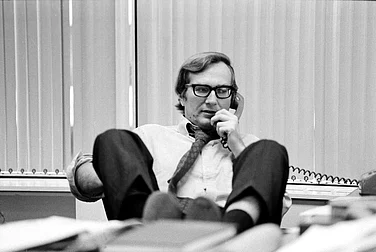Hindi cinema has had a long tradition of depicting rape scenes but the filming of such scenes has changed over time. Debutant director Manish Mundra's film 'Siya', which has just been released, seems to be inspired by the heinous incidents of rape in Hathras and Unnao. In a hard-hitting manner, the film shows how a rape victim and her family have to fight a long battle on various fronts to get justice.
Depiction of rape in Hindi cinema is an important element towards understanding women's freedom and empowerment in society. When we look back at the early stages of Hindi cinema, we see patriarchy in film after film. In those movies, female characters were invariably portrayed as docile and subservient, indicating that the status of women was that of second-class citizens in society at that time.
The women characters were usually projected as the weak link in a family. In a vendetta story, the sister of the leading man would be raped by the villain to take the story forward. Of course, this was not applicable to the leading lady who was saved by her hero in the nick of time even if an attempt was made to outrage her modesty.
An example of this can be seen in Bimal Roy's Madhumati, where the villain played by Pran unsuccessfully attempts to rape the heroine Vyjayanthimala. The rape victim, therefore, had to be either the hero's sister or a poor girl from an underprivileged class.
Actor Yashpal Sharma says that Hindi cinema was dominated by rampant commercialism in the early seventies, which was reflected in the mainstream films made in that era. Just as item numbers and comedy sequences, rape sequences were included randomly to lure the audiences.
It was the time when actors like Prem Chopra, Sudhir and Ranjeet earned the sobriquet of ‘rape experts’ because of the frequent rape scenes in their successive movies. Such scenes had no background or justification in the script but they became an indispensable part of most commercial films. Actor Ranjit himself has admitted at public forums several times that he used to get disgusted with himself while acting in such scenes time and again.
Veteran Hindi novelist Dhirendra Asthana says that in the seventies and eighties, the grandeur with which mainstream Hindi films picturised rape scenes, shows that the filmmakers unknowingly whipped up the interest of audiences in such scenes.
That trend became so popular that the audience would watch a particular film again and again just because it contained rape scenes. The film "Insaaf Ka Taraju" is a great example. The impact on such scenes on society could be gauged from the fact that the perpetrators of many horrific sexual crimes against women in real life in that period were often quoted as saying that they were inspired by the rape scenes in Hindi films.
Actress Sunita Rajwar, an alumna of the National School of Drama Delhi, says that there has been a custom of treating women as sexual objects in society. Through films, literature, TV, advertisements, the idea has been nurtured that woman is only an object of enjoyment, a body, she says. “But as the parallel cinema, feminist movement, media revolution gained momentum in India, the appearance of female characters in Hindi films also changed.”
It is true, Many filmmakers brought about the changes by treating scenes of female sexual abuse in a sensitive manner. Art cinema stalwart Shyam Benegal's early films “Ankur” and “Nishant” are examples of how the winds of change began to blow in the parallel Hindi cinema in the seventies alongside the crass commercialisation of mainstream films.
These films basically challenged the patriarchy by focusing on the sexual harassment of the leading heroine. Taking a leaf of it, the commercial cinema also portrayed rape scenes in films such as Padmini Kolhapuri in “Prem Rog”, Madhuri Dixit in “Prem Granth” and Dimple Kapadia in “Krantiveer” in a sensitive manner. The result was that the glorified depiction of rape was confined to only B and C grade Hindi films.
According to film critic Deepak Dua, the historical change in the depiction of rape in Hindi films was witnessed on a larger scale after the Nirbhaya rape case in Delhi, which case shook the Indian society, compelling everyone to think from where such cruelty and demonic tendency came in the perpetrators of crime. Director Anubhav Sinha's "Article 15", Sri Devi's film "Mom", and Taapsee Pannu-starrer "Pink", which came after the Nirbhaya rape case, underlined the self-respect, expression and freedom of women in society. These films not only talk about the social, psychological side and effects of rape, but triggered discussions to create awareness against the crime.
Although it is often depicted that the common man loses faith in the law and justice system due to the complex judicial process in rape case, sensitive directors have worked to break this tradition and established that no matter how difficult the path of struggle, justice is definitely done. It is heartening to know that Hindi filmmakers are now trying to tackle crimes against women in a sensitive manner.
From the time when depiction of rape scenes gave the licence to the filmmakers to depict vulgar scenes, the film industry has come a long way.


























